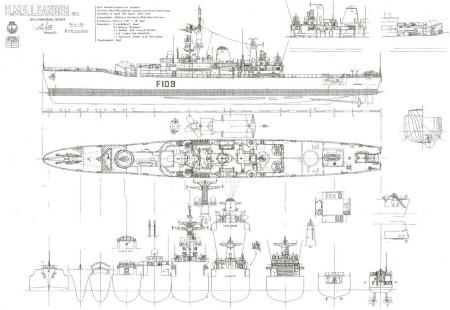The Leander class frigates were a class of general-purpose frigates that served in the Royal Navy and several other navies around the world. They were designed to be versatile ships, capable of fulfilling a wide range of roles, including anti-submarine warfare, anti-surface warfare, and air defence.
A Brief History
The Leander class was a development of the earlier Whitby class frigates. Construction of the class began in the 1950s, with the first ship, HMS Leander, being launched in 1959. A total of 18 ships were built for the Royal Navy, and several more were built for other navies, including the Australian, New Zealand, and Chilean navies.
Key Features and Capabilities
The Leander class frigates were relatively small ships, but they were well-armed and equipped. Their primary armament consisted of a 4.5-inch gun, a Seacat missile system for air defence, and anti-submarine weapons such as torpedo tubes and depth charges. They were also equipped with a helicopter hangar and flight deck, allowing them to operate helicopters for search and rescue, anti-submarine warfare, and other tasks.
Service and Legacy
The Leander class frigates served with distinction in various roles, including patrolling the seas, participating in peacekeeping operations, and conducting search and rescue missions. However, as naval technology advanced, the class began to show its age. Many of the Royal Navy’s Leander class frigates were decommissioned in the 1980s and 1990s.
Despite their eventual retirement, the Leander class frigates played a significant role in the history of the Royal Navy and other navies. They were versatile, reliable, and capable ships that served their countries well for many years.


